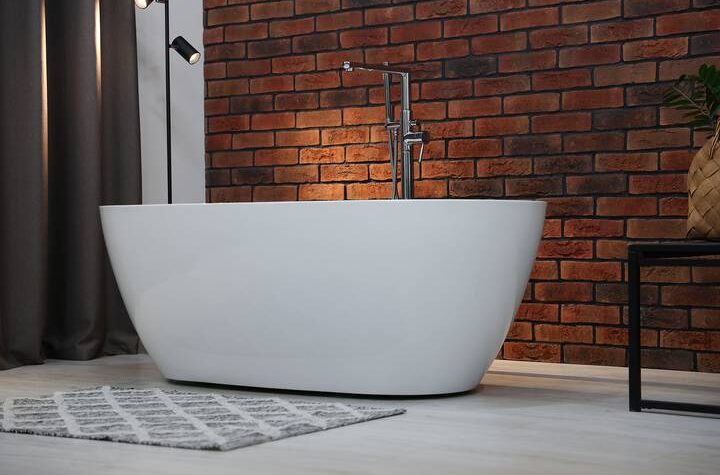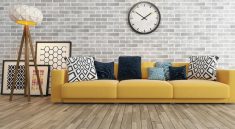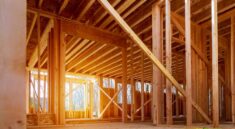Creating an accessible bathroom can be done without sacrificing style or functionality. Whether you’re designing for aging family members, individuals with disabilities, or simply planning for the future, an accessible bathroom renovation is an investment in comfort and safety.
With thoughtful design and a few strategic features, you can transform your bathroom into a modern, inclusive space that meets everyone’s needs. Here are some innovative ideas for renovating your bathroom with accessibility in mind.
Idea #1: Walk-In Bathtub
Walk in bathtubs feature a low-entry threshold and a watertight door that swings open, allowing easy and safe entry into the tub. This eliminates the need to step over high walls, which reduces the risk of slips and falls, particularly for individuals with limited mobility.
Some walk-in bathtubs offer therapeutic features such as hydrotherapy jets or air massage systems. These options enhance the bathing experience, promoting relaxation and wellness. Walk-in bathtubs are designed with user-friendly controls. Temperature controls, jet settings, and other features are typically within easy reach, allowing users to adjust settings easily.
Idea #2: Roll-In Shower
Roll-in showers feature a barrier-free design that eliminates the need for thresholds or step-in entries. This accessibility feature ensures easy access for wheelchair users and individuals with limited mobility, helping them maintain independence and safety.
Roll-in showers typically boast a generous floor space, allowing unrestricted movement and maneuverability within the shower area. The spacious layout accommodates mobility aids such as shower chairs or transfer benches, providing ample room for comfortable showering experiences.
Idea #3: Adjustable Height Fixtures
Adjustable height fixtures, such as showerheads, faucets, and handheld sprays, can be easily tailored to meet the specific needs of individual users. Whether you’re accommodating individuals of varying heights or individuals with mobility aids, adjustable fixtures allow for personalized comfort and accessibility.
Adjustable height fixtures are designed with user convenience in mind, featuring intuitive controls and easy-to-operate mechanisms. Users can adjust the height of the fixture to their preferred position, ensuring a comfortable and ergonomic experience every time.
These fixtures can benefit individuals with disabilities, seniors, and anyone seeking a more adaptable and user-friendly bathroom environment.
Idea #4: Accessible Vanity
An accessible vanity is designed with ample knee clearance and open space beneath the sink to accommodate wheelchair users comfortably. This feature allows individuals to approach the vanity without obstacles, promoting independence and ease of use.
Accessible vanities may feature adjustable height countertops or sinks. This feature ensures that individuals using mobility aids can access the vanity comfortably without straining or reaching. Accessible vanities often include faucets and controls with lever handles or touchless operation for easy use by individuals with limited dexterity or strength.
These user-friendly features make adjusting water temperature and flow simple without tight grasping or twisting motions.
Idea #5: Non-Slip Flooring
Non-slip flooring is a crucial feature in modern, accessible bathrooms, offering safety and peace of mind for users of all ages and abilities. Non-slip flooring is available in various materials, colours, patterns, and textures.
Whether you prefer the natural look of stone tiles, the warmth of wood-inspired vinyl planks, or the durability of rubber flooring, there’s a non-slip option to complement your bathroom style. Non-slip flooring is typically easy to maintain, requiring minimal effort to keep it clean and looking its best.
Idea #6: Widened Doorways
Widened doorways create a more accessible entrance to the bathroom, allowing individuals with mobility challenges or disabilities to enter and exit the space more easily. This promotes independence and autonomy, enabling users to navigate the bathroom more freely and confidently.
In addition to wheelchairs, widened doorways provide ample space for other mobility aids like walkers. Users can maneuver their devices through the doorway without the risk of collisions or obstructions, enhancing safety and usability in the bathroom.
Widened doorways facilitate emergency access to the bathroom, allowing caregivers, first responders, or medical personnel to enter the space quickly and efficiently in an emergency. This feature is especially important for individuals requiring assistance or medical attention in the bathroom.
Idea #7: Assistive Technology
Integrate innovative assistive technology into your bathroom for added convenience and accessibility. Smart home assistants like Amazon Alexa or Google Assistant can be integrated into bathroom fixtures and appliances, allowing users to control lights, faucets, showers, and other devices with simple voice commands.
This hands-free operation is particularly beneficial for anyone with limited mobility or dexterity. Smart home monitoring systems equipped with sensors allow caregivers or family members to remotely monitor the bathroom activity of loved ones, providing peace of mind and timely assistance when needed.
By incorporating these accessible bathroom renovation ideas into your design plan, you can create a modern and inclusive space that prioritizes comfort, safety, and functionality for users of all ages and abilities. Whether you’re making minor adjustments or undertaking a complete remodel, investing in accessibility ensures that everyone can enjoy a safe bathroom experience.




